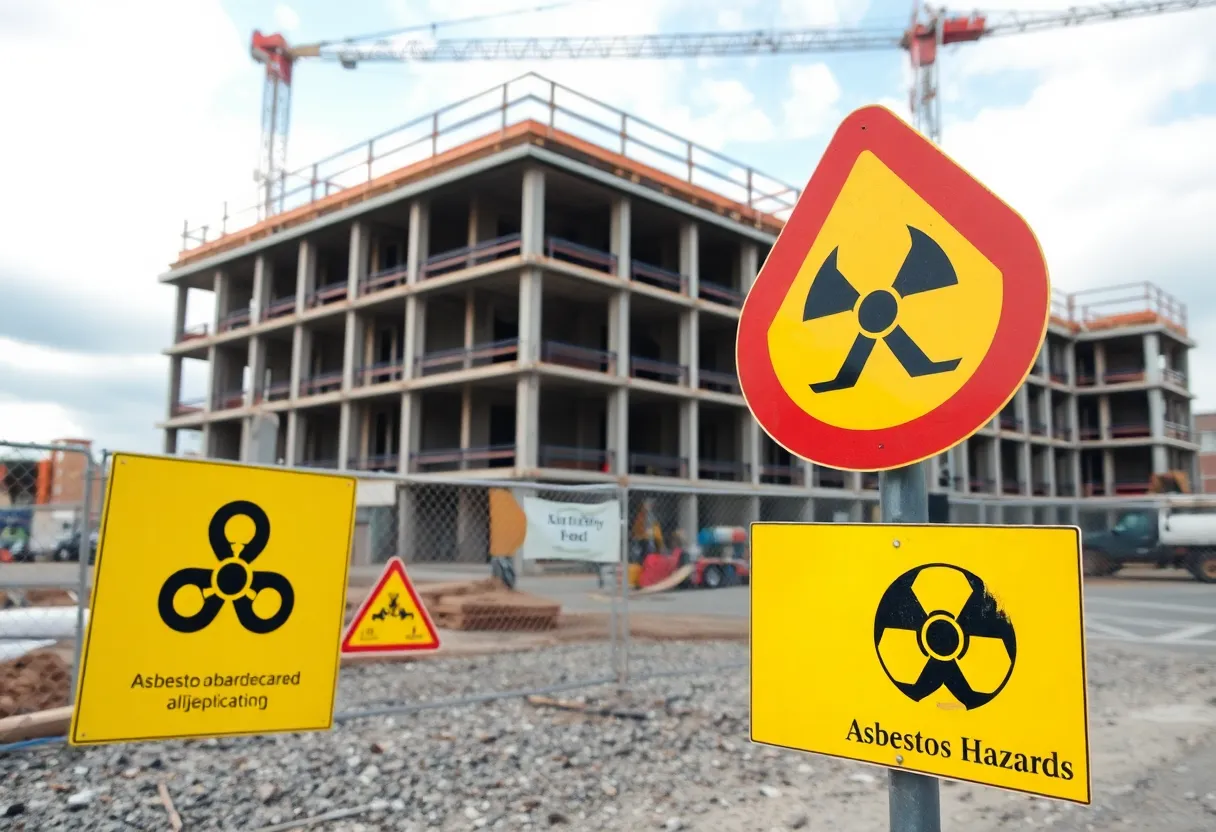News Summary
A major construction firm in Scotland is facing severe accusations of improperly disposing of dangerous asbestos under newly built homes. This revelation heightens fears about the lingering health risks of asbestos exposure, particularly for families in residential areas. Personal accounts, such as that of Raymond Jacobs, highlight the devastating effects of mesothelioma, a cancer linked to asbestos. With a significant presence of asbestos still in public buildings, activists are demanding action and increased safety measures to protect current and future generations from this silent threat.
Deadly Asbestos Allegations Rock Scottish Building Sector
A major building firm in Scotland is under fire, facing serious accusations of dumping dangerous asbestos under newly constructed homes. This shocking revelation has raised alarms about the persistent and deadly threat of asbestos lurking in residential areas—a concern that echoes throughout communities in the country.
Tragic Personal Stories and Widespread Risks
The story of Karen and Raymond Jacobs highlights the devastating impact of asbestos exposure. After 36 years of marriage, the couple had envisioned a fulfilling retirement together. Tragically, Raymond’s temporary job at a demolition site as an 18-year-old led to his diagnosis of mesothelioma, an aggressive and often incurable cancer linked to asbestos. He battled the disease for years, ultimately passing away in July 2022, leaving behind Karen, who was just 56 years old. Such stories are becoming all too common, underscoring the urgent need for public awareness about asbestos-related risks.
Asbestos use was prevalent until its ban in 2000, primarily due to its fire-retardant properties. However, the legacy of this material continues to haunt not only those previously exposed but also families living in homes constructed before the ban. Current estimates suggest that many homes may still contain asbestos fibers, posing potential health dangers that can lie dormant for decades.
Long-Term Health Impacts
Exposure to asbestos can lead to severe and often fatal health issues, including asbestosis, lung cancer, bile duct cancer, ovarian cancer, and mesothelioma. The latter, in particular, has a grim prognosis, with a mere 44.3% of patients surviving more than one year post-diagnosis. Alarmingly, mesothelioma symptoms may not manifest until as long as 60 years after the initial exposure.
Public Health Scotland’s troubling reports indicate that asbestos exists in at least 695 NHS buildings in Scotland. This situation raises serious concerns for the safety of students and staff alike, as asbestos is present in over 80% of schools and nearly 90% of hospitals in the UK. The demographic of diagnosed patients is evolving, with increasing cases among younger women, highlighting the urgent need for effective interventions and safety protocols.
Research and Treatment Developments
Research is ongoing to improve the understanding and treatment of mesothelioma. Dr. Carsten Hansen is investigating genetic factors associated with the disease, paving the way for more personalized therapies. His research utilizes global databases and advanced imaging techniques to evaluate the effectiveness of mesothelioma treatments. Additionally, the second phase of the MITOPE trial for a new mesothelioma treatment called RSO-021 has commenced in Glasgow, aiming at selectively targeting malignant cells.
The Call for Action
The revelation of ongoing asbestos dangers in newly built homes, along with the substantial presence of asbestos in public buildings, has spurred activists and concerned citizens into action. Clydeside Action on Asbestos, a committed campaign group, is working tirelessly to seek justice for victims of asbestos-related diseases. However, they face challenges as the Scottish government has recently refrained from providing funding due to changing grant application processes.
As public awareness grows, the Health and Safety Executive continues to emphasize that asbestos remains the biggest workplace killer in the UK, asserting that it is only dangerous when disturbed. The Scottish Government’s position suggests that undisturbed asbestos is safe, which seems increasingly hard to justify as new reports of exposure surface.
A Grim Reality for Future Generations
The potential health risks of asbestos are alarming, particularly for children, who are five times more likely than adults to develop mesothelioma after exposure. Reports indicate that between 200 and 300 deaths annually in Scotland are attributed to asbestos exposure, most notably in schools.
As the debate surrounding asbestos safety and management continues, it remains vital for families currently living in older homes to remain vigilant. Awareness and education about the dangers of asbestos are critical to preventing further tragedies, ensuring that stories like the Jacobs family’s are not repeated.
Deeper Dive: News & Info About This Topic
HERE Resources
Veterans at Greater Risk: Asbestos and Mesothelioma Health Crisis
Concerns Rise Over Asbestos Recycling Practices in New South Wales
The Tragic Journey of Asbestos-Related Illness
BNSF Railway Faces Legal Challenges Over Asbestos-Related Deaths in Libby, Montana
Asbestos Regulation Takes a Historic Turn: EPA Moves to Ban Ongoing Uses
Johnson & Johnson’s Talc Products Face Unprecedented Legal Turmoil
Springfield Properties Faces Asbestos Allegations
Tragic Outcome: West Suffolk Man Falls Victim to Asbestos Disease
Allegations of Asbestos Dumping by Major Scottish Housebuilder Spark Outrage
Major UK Study Targets Asbestos-Related Cancer to Unveil Early Detection



















